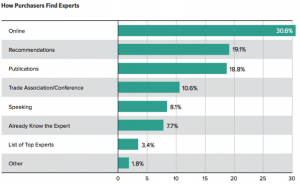Yes, Millennials now represent the majority of the workforce. And yes, Millennials bring with them a unique set of work expectations.
While it’s important (and necessary) that employers understand the different work styles of the generational groups, let’s not forget that teams often consist of a generational mixed bag, and further, not every Millennial thinks alike. That’s why it’s valuable to sometimes take a step back from that discussion and talk about what works when managing adults, regardless of if they are a Baby Boomer, Gen Xer, or Millennial.
Institutionalize Feedback
Whether you use employee surveys or quarterly company meetings, you should create a regular schedule of dialogue and feedback, and stick to it. Try to mix anonymous opportunities to give input (read more on why this is important) with more public dialogue as well. The intergenerational secret to this activity, however, is not the form of the feedback so much as the response to it. If people see that employee feedback results in change, they learn to trust that cycle and mechanism, and will rely less upon complaining, gossiping, or spreading rumors. This holds true across the generations, so make an effort to regularly obtain and act upon any feedback from your employees.
Speak to Strengths
Create a corporate culture where people are known for and speak to each other’s strengths. Not only is this a positive way to look at people, but it also reinforces the fact that in a dynamic business culture, there are new skills and knowledge areas that fresh graduates have that are highly valuable to the company, just as there are things that only experience can teach. As author and management expert Marcus Buckingham explains, managing to strengths sounds obvious, but it’s not often practiced in our business world that is “obsessed with weaknesses and finding ways to fix them.” Don’t ignore weaknesses, but focus on and invest in strengths.
Map the Competencies
In its simplest form, the idea behind competency mapping is that for particular roles or departments, you identify all the skills, knowledge, and attributes (which make up the competencies) required to excel in that area. This isn’t a role description so much as a comprehensive performance review of what the ideal job performance looks like. Not only does such a map clarify the standards for strong performance, but also it makes actual performance reviews more equitable and meaningful, two characteristics that have huge appeal across generations.
In sum, the generational stats out there are extremely important to understand the workplace trends and landscape, but treat employees like individuals, not a demographic data point. And when in doubt, simply ask what works for them.
Business & Finance Articles on Business 2 Community(60)






